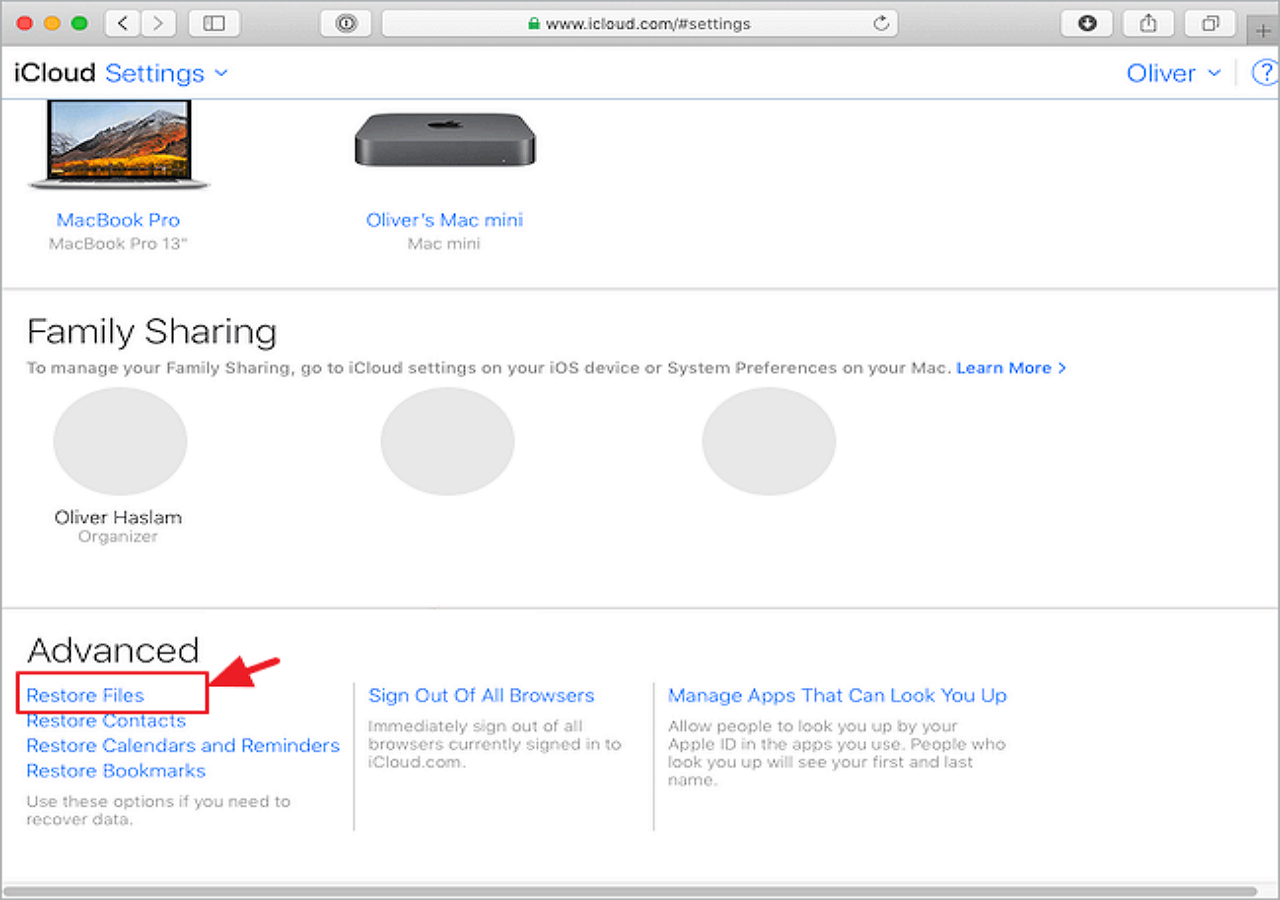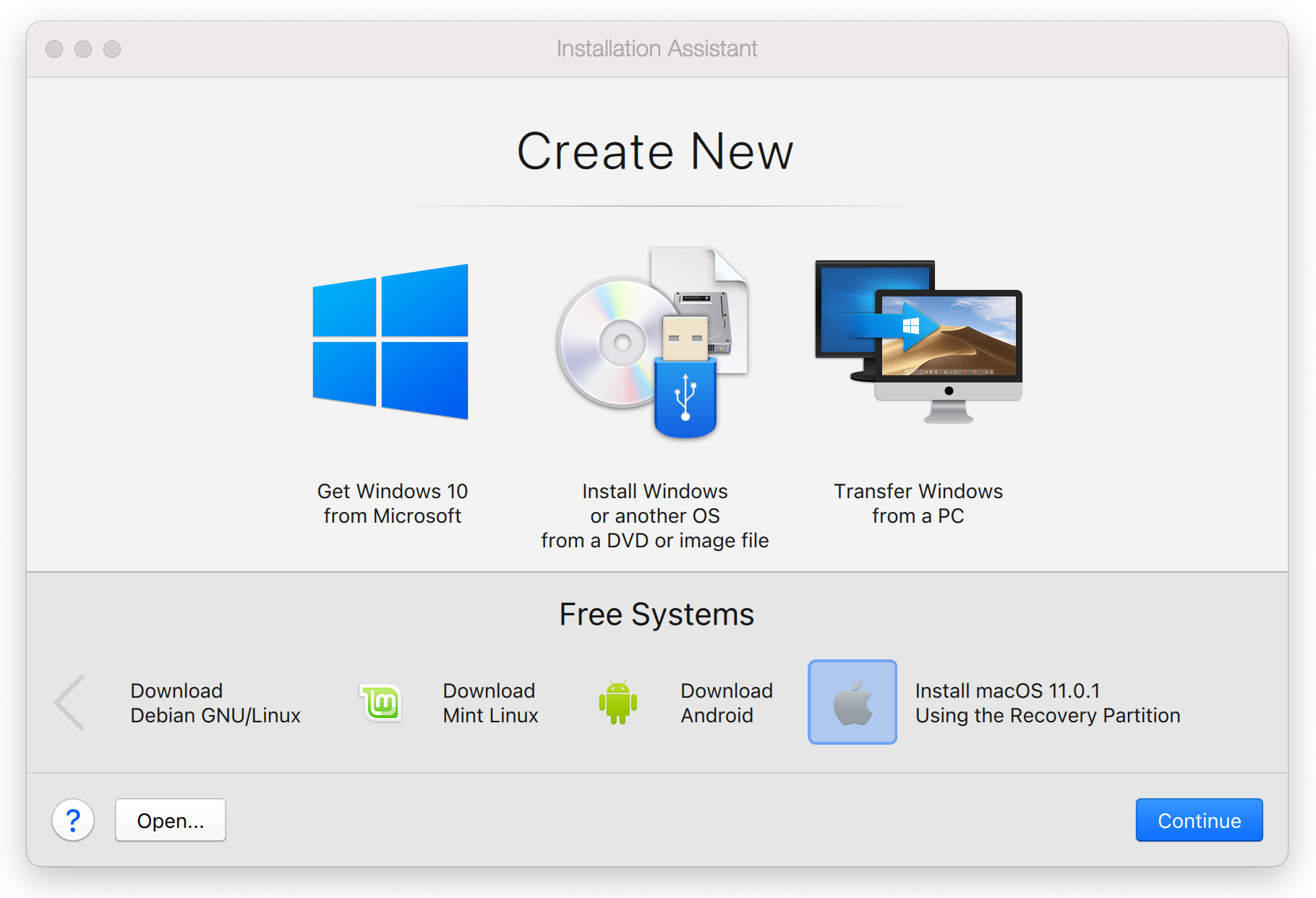

- #Recreate a recovery file for mac osx install#
- #Recreate a recovery file for mac osx password#
- #Recreate a recovery file for mac osx download#
- #Recreate a recovery file for mac osx free#
This is important because you don’t want to overwrite the deleted files. Step 8: Now you need to tell the program where to undelete the files to, but make sure you don’t select the same partition that they were stored in prior to being deleted. Step 7: The next step is to confirm the file system of the partition where the deleted files were. You’ll be taken back to the search page, where you can hit Enter where the Search option is highlighted. Step 6: Record your settings by pressing the letter b, then hit Enter to confirm. Use the letter s to unselect all options, and then highlight the one you want using the letter x. Step 5: You can hit Enter to use the Search option, or use the right arrow to select File Opt, which gives you a list of file types to look for.

Select the right partition using the up/down arrow. Step 4: You will now see the entire list of partitions on your Mac’s hard drive, beginning with the entire disk, then the system partition, after which all the partitions you created will be listed. Step 3: Select the disk where the files were deleted from by using the up/down arrow keys on your keyboard. This is a command line utility, so when the program opens you’ll see something like this: The “sudo” gives you root access, which you might need in order to see all the drive partitions on your Mac.
#Recreate a recovery file for mac osx password#
Step 2: Enter your password after the final command and hit Enter. Step 2: TestDisk is a command line based tool so you need to open Terminal for further operations.
#Recreate a recovery file for mac osx install#
Note that if Homebrewa> is installed on the Mac, you can install the app via this command: You have to unzip the file via an app like Unarchiver or in Terminal with the command: tar -xvzf _2
#Recreate a recovery file for mac osx download#
Step 1: Go to TestDisk official website and download the Mac version from there. There is a little bit of command line work involved, but if you follow the steps below you should be good to go. So, if you only want to recover Word documents or Excel spreadsheets, you can do that with this utility. The best part about the program is that you can recover files by type. It works by recovering deleted files based on the partition in which they were stored.
#Recreate a recovery file for mac osx free#
TestDisk, also known as Photorec, is a free file undelete program developed by Christophe Grenier of CG Security. If your files are unrecoverable using the first two methods, try this third method. However, you won’t be able to get them back if they were permanently deleted from. This method works whether you deleted the files in iCloud, your Mac or even your iOS device.

Now click on Restore to put them back in the same folder. Step 2: Navigate to the folder where the files were deleted from and select them. You’ll see an option called Recently Deleted. Step 1: Go to and click on iCloud Drive. Getting back your files from iCloud Drive is simple: iCloud is Apple’s cloud service, and it is highly recommended that you back up all important data here in case something like this happens. If you have backed up your data to iCloud, this is another way you can use to try and retrieve deleted files. If not, then you have to find another way to recover your deleted files. Of course, this method assumes that you have turned Time Machine on and done backups to a specified drive or disk. You can also preview files by pressing Space Bar. Step 4: Select the items you need and click on Restore to put them back where they were. You can change the time using the Up/Down arrows shown on the screen. You will see a timeline on the right edge of the screen. Step 3: Open Time Machine from Launchpad, which is located in the Other folder. For example, if they were in the Documents folder, open that folder in Finder. Step 2: Open a Finder window and navigate to the directory where the files used to be. Step 1: If you have done a Time Machine backup to an external drive, make sure it is connected to the computer. To recover specific files from Time Machine, follow the steps shown below (Taking Mojave as example): After 30 days they are automatically sent to Time Machine, which is the Mac’s native system recovery utility. This method relies on the fact that deleted items sit in your Trash folder until you get rid of them permanently or for a period of 30 days. Let’s look at three different ways to get back deleted files on a Mac computer. However, if you have the right tools for the job, you can recover deleted files in no time. Recovering them is possible, of course, but not as easy a task as it sounds. But the problem is that users sometimes tend to accidentally delete files that they need later on. Keeping your Mac clean and free of unwanted files is essential if you want to keep it running like new.


 0 kommentar(er)
0 kommentar(er)
